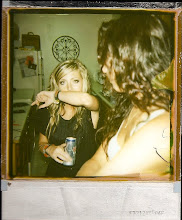--What were the average shot lengths (ASLs) for the following periods?
1920s- 4 to 6 seconds per shot
1930-1960- 8 to 11 seconds
Mid-1960s- 6 to 8 seconds
1980s- 5 to 8 seconds (musicals, action, romances, and comedies tended towards ASL's of 4 to 5 second range)
2000 (“by century’s end”)- no more double digit ASL's.
--How has faster editing in Hollywood affected the other elements of film style?
There has been less focus on the clear cut edits, with the use of cutting on moving shots, "vehicles whiz through the foreground," cut on bursts of light, rack focusing, in general, a less "steady progression toward a revelation" creating an intensified continuity.
--Why are establishing shots less necessary in intensified continuity?
With this style, there are constant cuts within a conversation, even during the middle of a sentence, that allows the shot-reverse-shots and character positions and eyelines help orient the viewer with the information needed to understand where and what is going on, which leaves little room for the establishing shot that provides the same information while seeming redundant.
--How were wide angle (short) lenses used after 1970?
They were used to give good focus in "several planes or full shots of a cramped setting", also for "looming close-ups, expansive establishing shots,...and medium shots with strong foreground-background interplay."
--How were telephoto (long) lenses used after 1970?
They were used in exterior scenes and locations, which enabled the camera to be setup a good distance away from the subject allowing more versatility. On interior sets, they helped save time and they allowed for multiple cameras to be set up out of each one's view. They were also utilized for the" close-ups, medium shots, over-the shoulder shots, and establishing shots."
--Why did filmmakers start mixing long and short lenses within scenes?
They wanted to utilize the long lens advantages while also keeping with the "1940's tradition of deep-space shooting" (because the long lens flattened planes).
--Why have filmmakers moved away from plan americain staging and lengthy two-shots?
They claim that it is boring, and much like minimalism. By using singles and over-the-shoulder shots, the filmmaker is able to pick and choose from the best "bits of each actor's performance."
--What options do filmmakers have for emphasizing moments in a scene if most of the shots are already close-ups?
They can "pick the best bits of each actor's performance" and allow the editor to vary the pace of a scene. They have to work between the medium two shot to the extreme close-ups. The shots of emphasis have now become those "orienting long shots" because they are used less than the repetitive close-ups. They also have to rely less on the actor's body, because the close ups don't contain them, mouths, brows, and eyes have become the focus.
--Describe three moving camera techniques that have become common in intensified continuity.
Lengthy and intricate traveling shots, "the prolonged following shot"--with the use of lighter cameras and steadicams, the prolonged following shot has been over-exagerrated by new filmmakers. Even following one or two characters through crowded places and such. Another is the prowling of the camera "even if nothing else budges"--such as randomly zooming in on a character's face during a conversation or "a forward tracking shot." These movements enable the building tension, intensity of a scene, or emphasize a moment. Or even the arc around a single character which provides detailed information.
Subscribe to:
Post Comments (Atom)

1 comment:
Very good.
Post a Comment